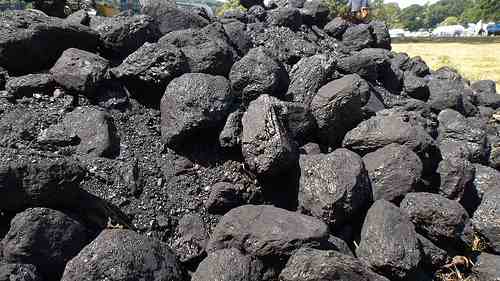

Economy
#COP21: New Coal – Is There Really A Market?
Real-world market conditions make it unlikely that plans to expand the use of coal around the world will come to full fruition, according to several reports presented at the UN climate summit in Paris (COP21). While the potential of new coal investments to take the world well past 2C of global warming has been noted at the summit, the real world experience of coal’s decreasing viability has been less well discussed.
Coal’s future poses an important question to these climate negotiations and beyond. To what extent will emerging and developing economies continue to rely on coal to fuel their energy needs? How fast and to what extent will industrialized economies transition away from coal to cleaner energy sources?
The context for decisions about coal are changing. Two coal plants are shelved or cancelled for every one plant built worldwide, according to a forensic bottom-up analysis by specialists CoalSwarm, which examined every plant around the world planned, permitted, built or cancelled from 2010 to the present day. In India, the figure jumps to six shelved or cancelled for every one built.
In countries with existing coal capacity, the conditions for rapid retirement of coal plants are becoming more favourable, as new technologies emerge.
“Recent history confirms that coal is a risky and expensive investment for any nation,” said Michael Brune, Executive Director of the Sierra Club, which collaborated with CoalSwarm on the Boom and Bust report.
“All over the world, people are demanding clean air and clean water as we move away from dirty fossil fuels toward the clean energy solutions that are increasingly powering communities in a reliable, cost-effective, and healthy way.”
The Sierra Club – which operates the Beyond Coal grassroots organising campaign in the United States to lead the transition from coal to clean, renewable energy – notes that more than 200 coal plants across the US have announced their retirement since 2010. The share price of Peabody Energy, the biggest privately owned coal-mining company in the world, is worth 1.5% of its 2011 value.
According to a recent report from the Institute for Energy Economics and Financial Analysis, Arch Coal, the second biggest US producer, is considering Chapter 11 bankruptcy protection, while Patriot Coal, Walter Energy and Alpha Natural Resources have filed already for bankruptcy this year.
Analysts speaking at the Paris climate summit said that coal assets are stranding with increased frequency, presenting investors with financial risks that they are progressively more reluctant to take.
Around half of the world’s coal is burnt in China. But here, too, the market is fading.
“China has taken enormous steps to begin to transition its energy structure from coal to cleaner energy, with coal consumption falling since mid-2014 for the first time this century,” noted Dr Fuqiang Yang of the Natural Resources Defense Council in Beijing.
“As China’s economy transitions from heavy industry to services, air pollution policies and regional coal caps are implemented more deeply, and China continues to lead the world in new wind and solar power installations.”
Indian researcher Dr Navroz K Dubash, Senior Fellow at the Centre for Policy Research, said: “India is placing its bets on renewable energy as the primary energy source for the future.
“The challenge is how to minimize additional coal. India is aggressively pursuing energy efficiency measures, which can also bring gains like less air pollution. To keep global coal use in check, it is also essential that other countries retire coal plants faster.”
Recent reports like those of Carbon Tracker make it clear that there is no place for new coal in a 2 degree world.
“The only inevitable conclusion we can draw on the future of global thermal coal is that it has none; not in the developed world or rapidly industrializing countries like India. Our latest work shows that no new coal mines are needed in the next decade if we are serious about 2 degrees, putting at risk a whopping $200 billion of potential investments,” said Anthony Hobley, CEO of the Carbon Tracker Initiative.
It is clear that the world is driving a low carbon transformation. Governments and investors across the world fully understand that coal is no longer a low risk option. A combination of substitution to cleaner energy, more energy efficiency to keep demand down, and retiring of existing plants is needed, depending on country context. It is for this reason that it is vital that the final agreement in Paris both reflects the progress towards the energy transition that is currently underway, and secures it for the future.


 Environment9 months ago
Environment9 months agoAre Polymer Banknotes: an Eco-Friendly Trend or a Groundswell?

 Environment10 months ago
Environment10 months agoEco-Friendly Home Improvements: Top 7 Upgrades for 2025

 Energy12 months ago
Energy12 months agoA Closer Look at The Rapid Growth of Solar Energy in Ireland

 Features8 months ago
Features8 months agoEco-Friendly Cryptocurrencies: Sustainable Investment Choices





























